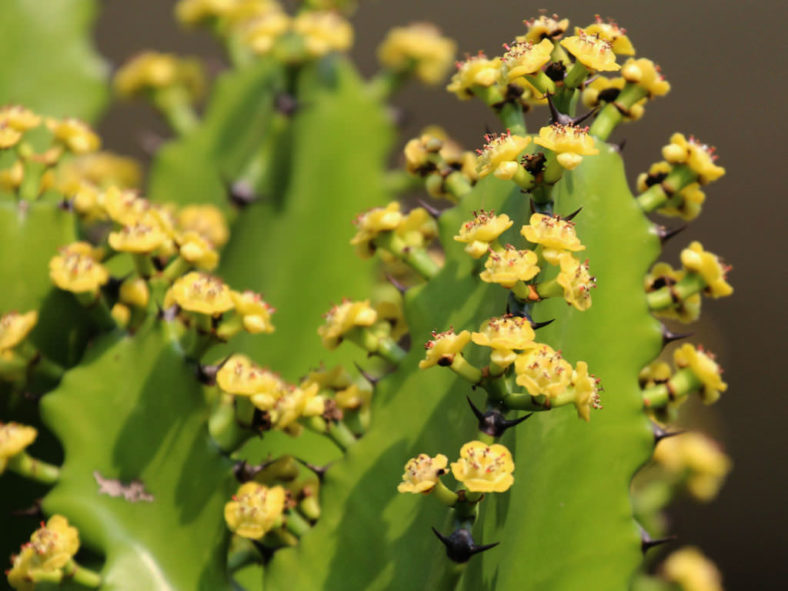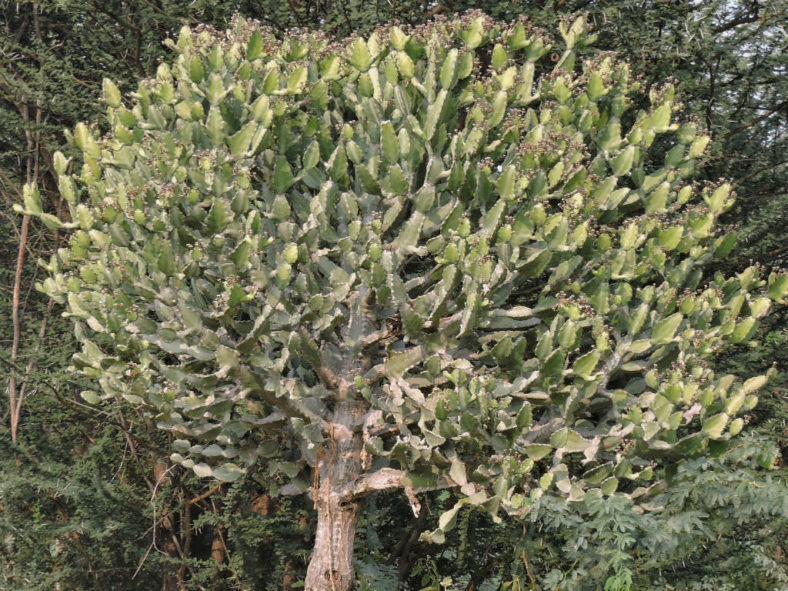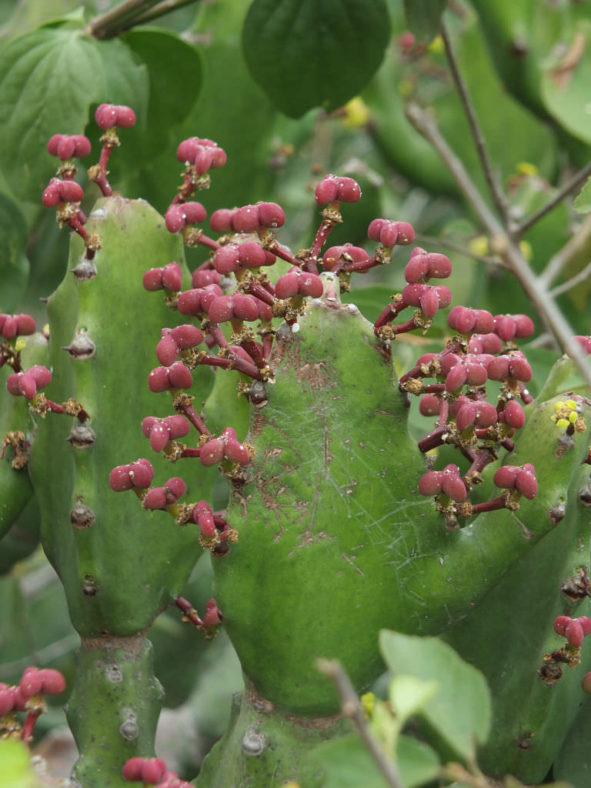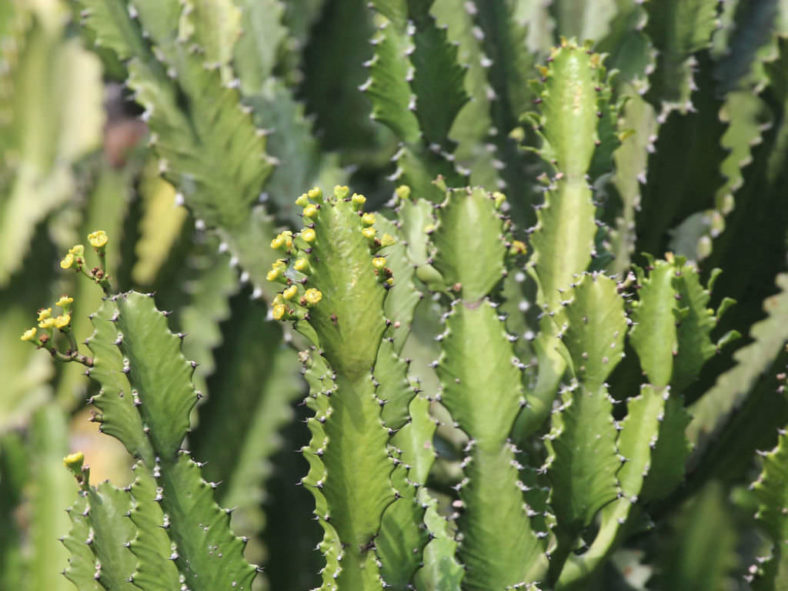Scientific Name
Euphorbia antiquorum L.
Common Name(s)
Antique Spurge, Euphorbia of the Ancients, Fleshy Spurge, Malayan Spurge, Malayan Spurge Tree, Square Cactus, Square Milk Hedge, Square Spurge, Triangular Spurge
Synonym(s)
Tithymalus antiquorus
Scientific Classification
Family: Euphorbiaceae
Subfamily: Euphorbioideae
Tribe: Euphorbieae
Subtribe: Euphorbiinae
Genus: Euphorbia
Etymology
The specific epithet "antiquorum (an-ti-KWOR-um)" means "old, ancient" and refers to the medicinal uses of the species in ancient times.
Origin
This species is native to southeastern Asia, especially India, but can also be found in neighboring countries, such as Bangladesh, Burma, China, Indonesia, Iran, Malaysia, Myanmar, Pakistan, Philippines, Sri Lanka, Thailand, and Vietnam.
Description
Euphorbia antiquorum is a succulent shrub or small tree with ascending branches and green leaves clustered at the apex. It can grow up to 23 feet (7 m) tall. The branches are smooth, green, 3- or 4-ribbed, and can be up to 2.8 inches (7 cm) thick. The older stems are cylindrical with brownish bark. The leaves can measure up to 4 inches (10 cm) long and 0.8 inches (2 cm) wide. The paired spines are blackish and can grow up to 0.2 inches (0.5 cm) long.
The cyathia are inflorescences consisting of cup-shaped clusters of modified leaves. Each cluster holds one female flower and several male flowers. They are yellowish-green to pinkish and appear all year round. The fruits are 3-lobed capsules, initially green, red when ripe, and can reach up to 0.2 inches (0.5 cm) in diameter.
Euphorbia antiquorum is the type species of the genus Euphorbia.

How to Grow and Care for Euphorbia antiquorum
Light: Most Euphorbias are sun lovers, but some will tolerate partial shade. Place your indoor Euphorbias on windows with southern or southeastern exposure.
Soil: Euphorbias require well-drained soil. They even thrive in poor, dry soils. Use a commercial potting mix formulated for cacti and succulents, or make your own.
Hardiness: Euphorbia antiquorum can withstand temperatures as low as 30 to 50 °F (-1.1 to 10 °C), USDA hardiness zones 10a to 11b.
Watering: Succulent Euphorbias can survive drought, but do not mean that they need it. From spring to fall, water when the top inch of soil feels dry. Reduce watering in winter. Give them just enough water to prevent wilting.
Fertilizing: Every Euphorbia will benefit from fertilizer. Apply a balanced fertilizer in a 10-10-10 NPK formulation, diluted to 1/4 strength weekly during the growing season.
Repotting: Euphorbias do not need to be repotted every year. However, when your Euphorbia is outgrowing its pot, it is time to repot the plant in a larger pot and give it a fresh potting mix.
Propagation: The easiest and fastest method of propagation for many species is by using cuttings. Euphorbias can also be grown from seeds, but they can be difficult to germinate and even hard to find.
Learn more at How to Grow and Care for Euphorbia.
Toxicity of Euphorbia antiquorum
Although Euphorbia antiquorum is harvested for local medicinal use, like all other Euphorbias, it produces a toxic white milky sap that can irritate the skin and eyes. Therefore, keeping the plant away from children and pets is best.
Links
- Back to genus Euphorbia
- Succupedia: Browse succulents by Scientific Name, Common Name, Genus, Family, USDA Hardiness Zone, Origin, or cacti by Genus
Photo Gallery
Click on a photo to see a larger version.


